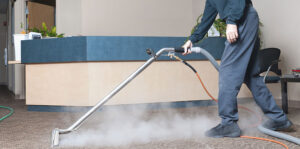Your roof is one of the most crucial components of your home. It protects you, your loved ones, and your possessions from the elements, making it essential to keep it in top condition. However, when it comes to roofing repairs or replacements, finding a reliable and skilled roofing company can be challenging. In Weatherford, TX, where the weather can be unpredictable, choosing the right roofing company becomes even more critical. This guide aims to provide you with valuable insights and tips on how to find the best roofing company in Weatherford, TX, ensuring that your roof receives the care and attention it deserves.
Why Choosing the Right Roofing Company Matters
Before delving into the process of finding a roofing company, it’s essential to understand why selecting the right one is crucial. A reputable roofing company will not only provide high-quality workmanship but also ensure that your roof is durable and long-lasting. Additionally, a reliable company will offer warranties on their work, giving you peace of mind knowing that your investment is protected.
Factors to Consider When Choosing a Roofing Company
Experience and Expertise: Look for a roofing company with years of experience in the industry and a track record of successfully completed projects. Experienced roofers will have the necessary skills and knowledge to handle various roofing issues effectively.
Licensing and Insurance: Ensure that the roofing company you choose is licensed and insured. A valid license indicates that the company meets the required standards and regulations, while insurance protects you from liability in case of accidents or damages during the project.
Reputation: Research the reputation of the roofing companies you’re considering by reading online reviews, asking for referrals from friends or family, and checking their rating with the Better Business Bureau. A company with a solid reputation is more likely to provide excellent service and customer satisfaction.
Quality of Materials: Inquire about the types of materials the roofing company uses for repairs or installations. High-quality materials are essential for a durable and resilient roof that can withstand Weatherford’s varying climate conditions.
Cost: While cost is a significant factor, it shouldn’t be the sole determinant in your decision-making process. Avoid choosing a roofing company based solely on the lowest price, as it could compromise the quality of workmanship and materials used.
Communication and Customer Service: Choose a roofing company that prioritizes clear communication and excellent customer service. A company that is responsive to your inquiries and keeps you informed throughout the project ensures a smoother and more satisfactory experience.
Warranties and Guarantees: Inquire about the warranties and guarantees offered by the roofing company on their workmanship and materials. A company that stands behind its work with comprehensive warranties demonstrates confidence in the quality of its services.
Tips for Finding a Good Roofing Company in Weatherford, TX
Local Referrals: Ask friends, neighbors, or local real estate agents for recommendations on reputable roofing companies in the Weatherford area. Local referrals are valuable as they are based on firsthand experiences and knowledge of the local market.
Online Research: Utilize online resources such as review websites, social media platforms, and the company’s website to research and gather information about roofing companies in Weatherford. Pay attention to customer reviews, ratings, and testimonials to gauge the company’s reputation and reliability.
Schedule Consultations: Once you’ve narrowed down your list of potential roofing companies, schedule consultations with each of them. During the consultation, discuss your roofing needs, ask questions about their experience, processes, and pricing, and assess their professionalism and responsiveness.
Request Multiple Quotes: Obtain detailed quotes from multiple roofing companies, ensuring that each quote includes a breakdown of costs for materials, labor, and any additional services. Compare the quotes carefully to determine which company offers the best value for your investment.
Check Credentials: Verify the credentials of the roofing companies you’re considering, including their licenses, insurance coverage, certifications, and affiliations with professional organizations. This ensures that you’re working with qualified and reputable professionals who adhere to industry standards and best practices.
Visit Completed Projects: If possible, ask the roofing companies for references or examples of their completed projects in the Weatherford area. Visiting these sites allows you to see the quality of their workmanship firsthand and assess whether they meet your standards and expectations.
Review Contracts Carefully: Before signing any contracts or agreements, carefully review the terms and conditions outlined by the roofing company. Pay attention to important details such as project timelines, payment schedules, warranties, and any exclusions or limitations.
Conclusion
Finding the best roofing company Weatherford, requires careful consideration and research. By following the tips and guidelines outlined in this guide, you can make an informed decision and choose a reputable roofing company that meets your needs and exceeds your expectations. Remember to prioritize experience, reputation, quality of materials, and customer service when selecting a roofing company, ensuring that your roof receives the attention and care it deserves for years to come. Investing in the right roofing company today will provide you with peace of mind and a reliable roof that withstands the test of time and Weatherford’s ever-changing weather conditions.











